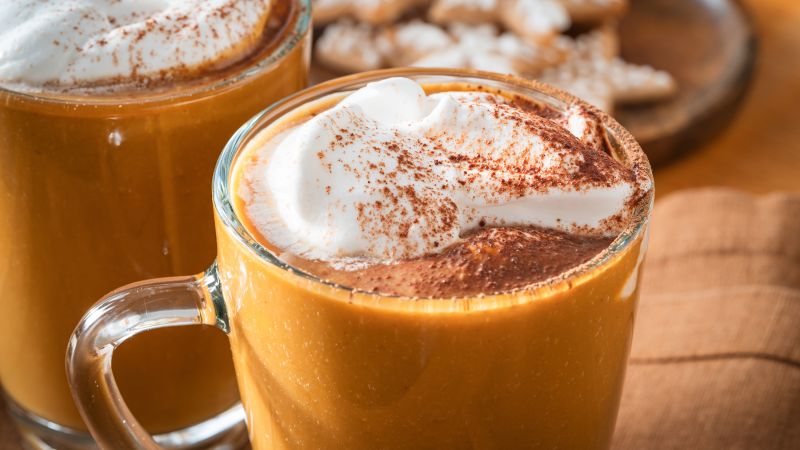Nothing says fall like a pumpkin spice latte, a flavor that has become synonymous with the season over the past decade. It has evolved beyond just beverages to include a wide range of products such as muffins, candles, dog treats, and cleaning supplies. The flavor, a blend of cinnamon, brown sugar, ginger, cloves, allspice, and nutmeg, evokes warm and nostalgic feelings in consumers, leading them to spend over $500 million on pumpkin spice products each year. Despite the polarizing opinions on the flavor, there is no denying its status as the emblem of fall.
Caitlin Covington, known for her fall aesthetic and cozy pumpkin-themed posts, finds comfort and nostalgia in pumpkin spice. She associates the aroma with childhood memories of homework at the kitchen table while her mom bakes cookies and lights a pumpkin spice candle. The flavor itself may not taste like pumpkin, but it stirs up rich imagery culturally associated with harvests, Thanksgiving, and other fall traditions. This connection to tradition and nostalgia is what elevates pumpkin spice products from mere commodities to cherished reminders of cozy family gatherings.
Starbucks played a significant role in popularizing pumpkin spice through its introduction of the pumpkin spice latte in the early 2000s. The decision to create a product that taps into the imagery, romance, and positive affinity with the fall season proved to be a smart move. Many consumers, like Covington, had their first taste of pumpkin spice at Starbucks and fell in love with the flavor, fueling its rapid rise in popularity. The success of pumpkin spice lies in its ability to provide a balance of novelty and familiarity, appealing to consumers’ desire for variety and stimulation.
The limited availability and seasonality of pumpkin spice products add to their allure, invoking a sense of excitement similar to the anticipation of seasonal fruits at the supermarket. Seasonal offerings like pumpkin spice signal the beginning of a new season, tapping into human preferences for seasonal cycles tied to agricultural patterns. For Starbucks, seasonal staples like the pumpkin spice latte contribute significantly to overall sales, especially during the holiday season, which is a lucrative time for many industries. Despite the risk of overextending the popularity of pumpkin spice by introducing fall earlier each year, many consumers embrace it as a lifestyle rather than just a seasonal trend.
Brands have capitalized on pumpkin spice’s multi-sensory marketing appeal, incorporating the flavor into various products and experiences that evoke nostalgia and warmth. Consumers, particularly women, find community in sharing their love for pumpkin spice through social media groups and posts celebrating all things fall. As the queen of fall, Covington’s cozy and pumpkin-themed content resonates with a large audience seeking connection and shared experiences around the flavor. While some may view pumpkin spice as a basic or overly hyped trend, its enduring popularity and emotional connection with consumers confirm its place as a beloved symbol of the fall season.


